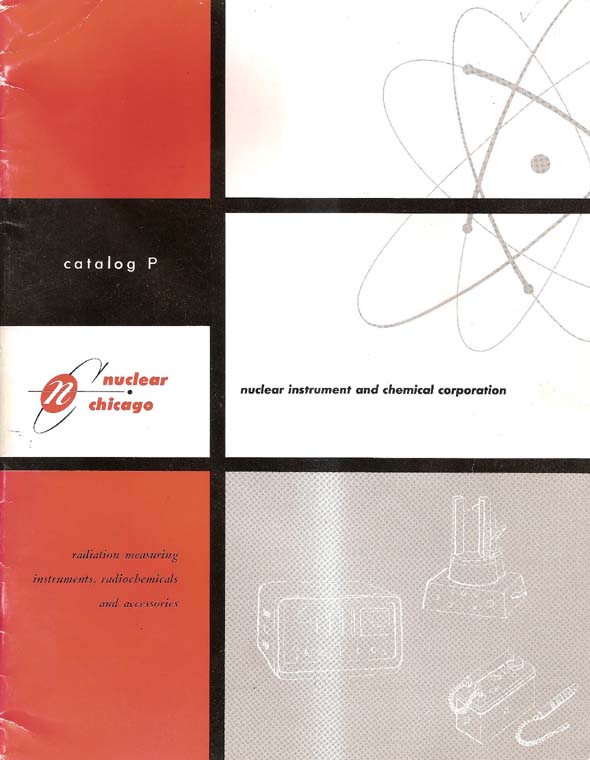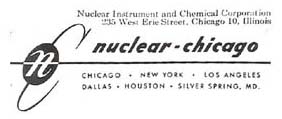
Nuclear-Chicago
Nuclear-Chicago was founded originally as Instrument Development
Laboratories, Inc. in February, 1946 by James A. (Jim) Schoke, a pioneer in the
nucleonics industry. Its first office and “factory” were located in a 1,000
sq. ft. store-front near the University of Chicago. He was joined by partners,
John Kuranz and Tom Mitchell, in May of 1946. They were all previously in the
Army’s Special Engineering Detachment of the Corps of Engineers and worked on
the Manhattan Project at the Metallurgical Laboratory (MetLab) at the University
of Chicago during WWII. The name of the company was changed, as it grew, in
subsequent years to the Nuclear Instrument and Chemical Corporation and finally
to Nuclear-Chicago. Schoke was President from the outset. Schoke was also one of
the founding members and first President of the Atomic Instrument Manufacturers
Association in 1950. Nuclear-Chicago was moved to 223 West Erie Street, Chicago,
Illinois in 1947, and in 1959 moved to Howard Avenue in Des Plaines, Illinois.
It went public (OTC) in 1948. Schoke left the company in 1955. He was a highly
successful entrepreneur building 3 more successful technical companies, all of
which were ultimately sold.
1James Schoke is an adviser to the National Radiation Instrument Catalog and provided historical details for this article on Nuclear-Chicago in 2014.The Atomic Heritage Foundation posted an interview with Jim Schoke. To view interview, click the link below.
http://manhattanprojectvoices.org/oral-histories/james-schokes-interview
Nuclear-Chicago was a distributor of radiation detection equipment. In 1954, the company underwent a name change from the Nuclear Instrument and Chemical Corporation to Nuclear-Chicago and the product line continued to expand. Beginning in 1954, some product literature and instruments were labeled with both the Nuclear Instrument and Chemical Corporation and Nuclear-Chicago names.

Nuclear-Chicago Logo 1954


Nuclear-Chicago Logos 1955
One product was the Model 2301 Sniffer introduced in the early 1950’s by Nuclear Instrument and Chemical Corporation. It was a low cost, general purpose instrument for the detection of x-rays, gammas and high energy betas. It was designed for uranium prospecting. It is small, lightweight, and uses standard flashlight batteries that will last 2 hours of continuous use. It has a thin-walled Geiger tube operated at 1000 volts. The unit has headphones or neon flash bulb. The intensity is directly related to the clicks or flash rapidity. The tube is located on the bottom of the unit and has a thin window which permits some beta radiation.
Nuclear Chicago introduced the Model 2302 “Super Sniffer” in 1954 with an improved design. The unit was 7-5/8” x 4-1/8” x 2.5” and weighs 2 lbs. It used two ordinary flashlight batteries. The unit came with earphones, batteries, radioactive check source, a U.S. government prospecting book and instructions. The unit sold for $49.50.
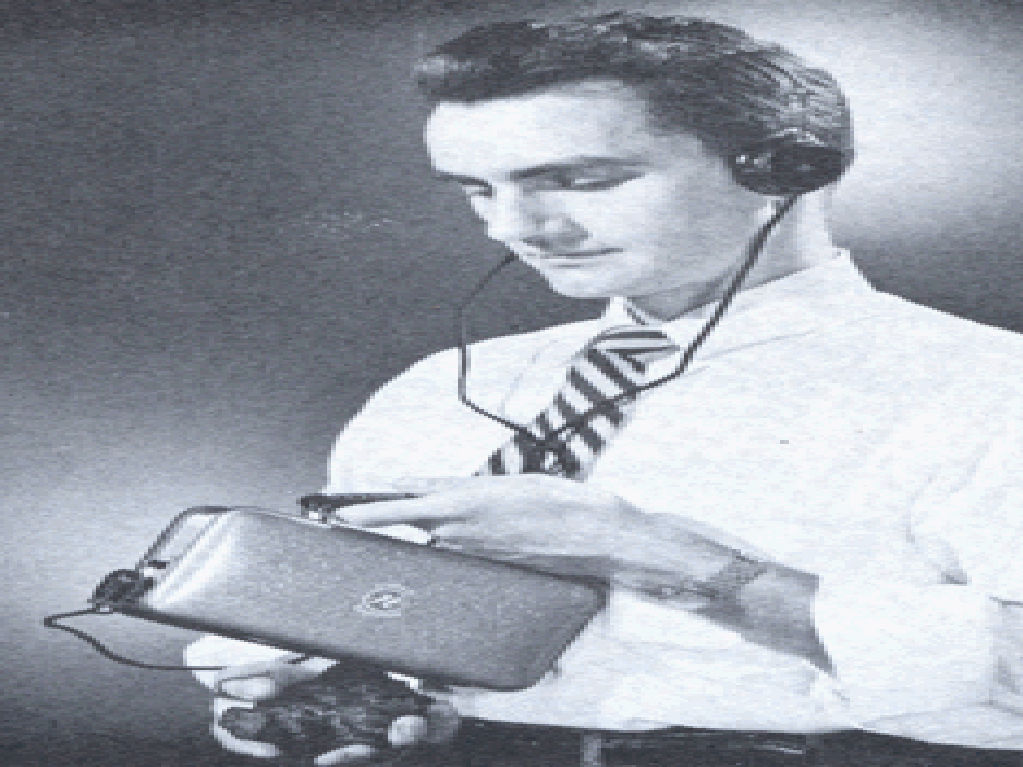
Nuclear Chicago Model 2302 Sniffer 1954
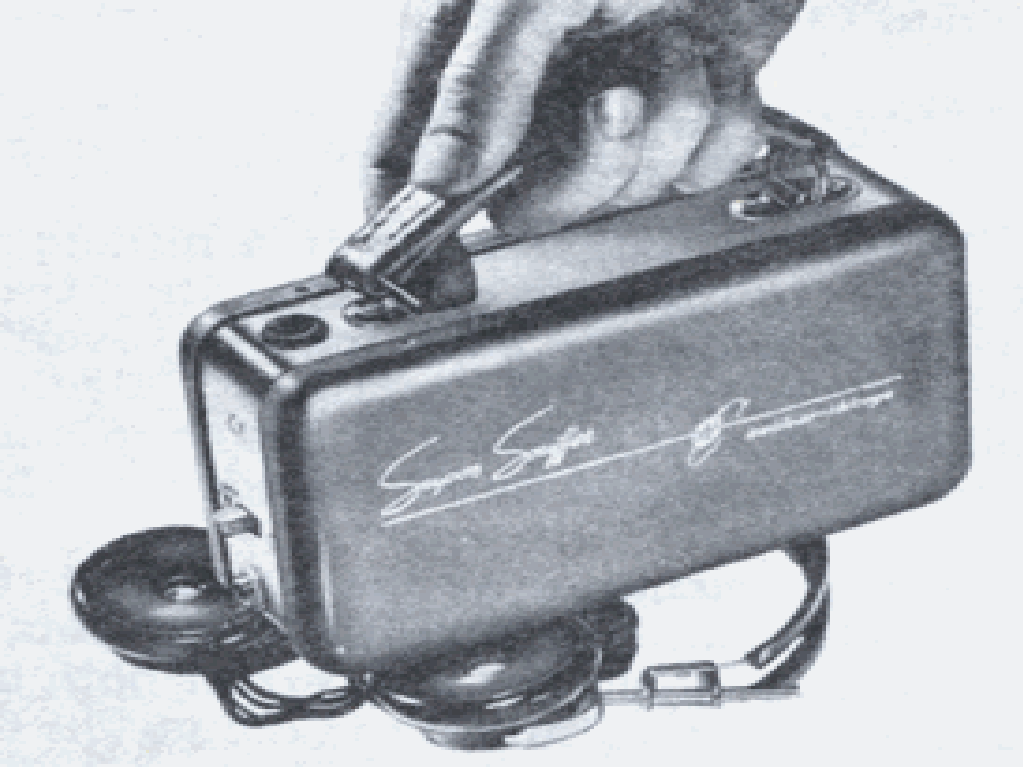

Nuclear Chicago Model 2302 Super Sniffer 1954
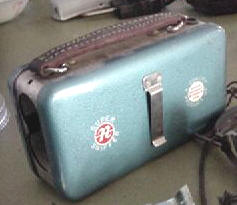
Nuclear Chicago Model 2303 Super Sniffer 1954
Nuclear Chicago also produced the “Oracle” Model 2613 for $325 in 1955. Popular Electronics July 1955 noted that it was probably the top notch Geiger counter on the market. It was sensitive to 0.001 mR/h changes on the built in meter. It contains a pack of ten specially matched GM tubes inside the unit. It was advertised to be recalibrated in the field if one tube goes bad. Metering give 0.02 to 2.0 mR/h. The cosmic ray background is half scale on the most sensitive scale. It has a 900 volt stabilized high voltage power supply and can obtain 250 hours use on one battery set. A neon light is on the face panel indicating battery failure. The unit comes with a calibrated 0.1% uranium sample for field calibration.
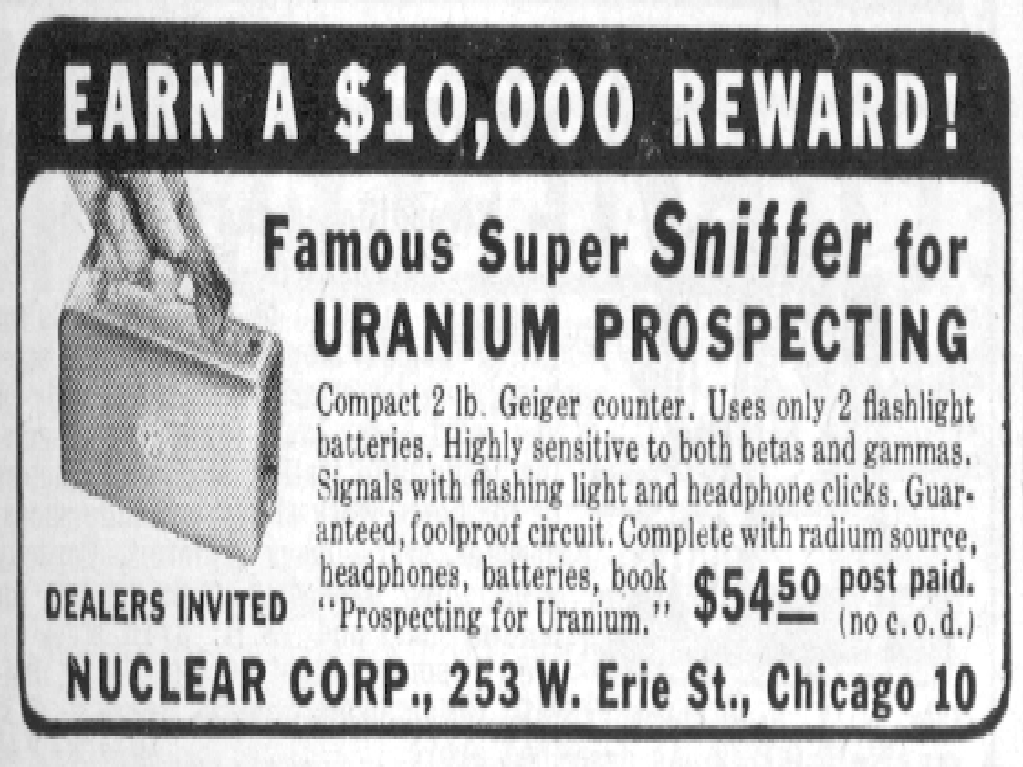
Nuclear Corporation Ad for Nuclear Chicago Super Sniffer 1955
The Model 2111 Pee Wee was a portable alpha counter sold by Nuclear Chicago in 1954. It was designed to detect alpha in the presence of beta and gamma. The probe was an air proportional counter about 2” x 9” and covered with a rubber hydrochloride window protected by a metal grill. It operates at 2250 volts. It had two ranges of 2000 and 20,000 cpm. It used two 1.5, one 67.5 and two 1224 volt batteries. The unit was 8” x 5.5” x 12” and weighed 16 lbs. The unit sold for $515. In 1957, it was considered obsolete due to its size and weight.
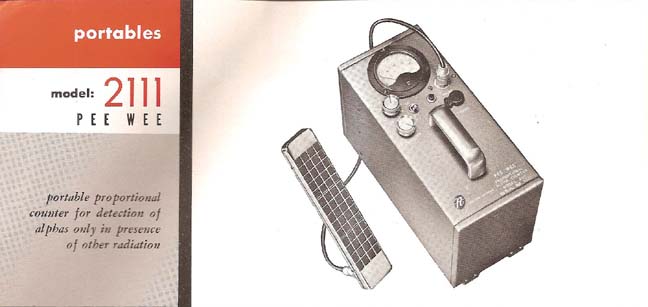
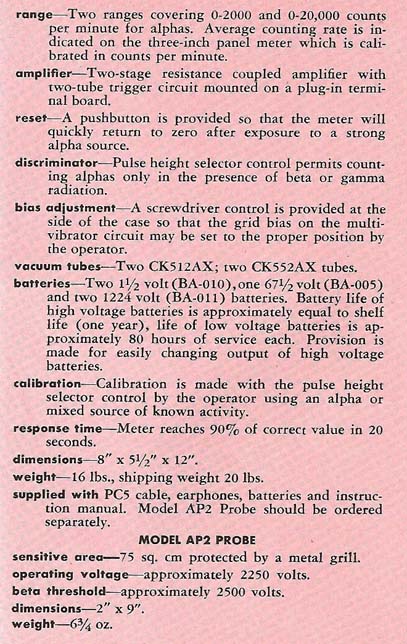
Nuclear Chicago Model 2111 PeeWee and Specifications 1955
The Model 2112 was a portable survey meter introduced in 1957. It had interchangeable probes for alpha (Model 2112-P) or neutron (Model 2112-N) detection. With its high sensitivity, it was suitable for health monitoring. It contains an unsealed air proportional counter in an external probe. The meter has three ranges of 150, 1500, and 15,000 cpm. The Model 2112-P sold for $445 and the Model 2112-N for $655.
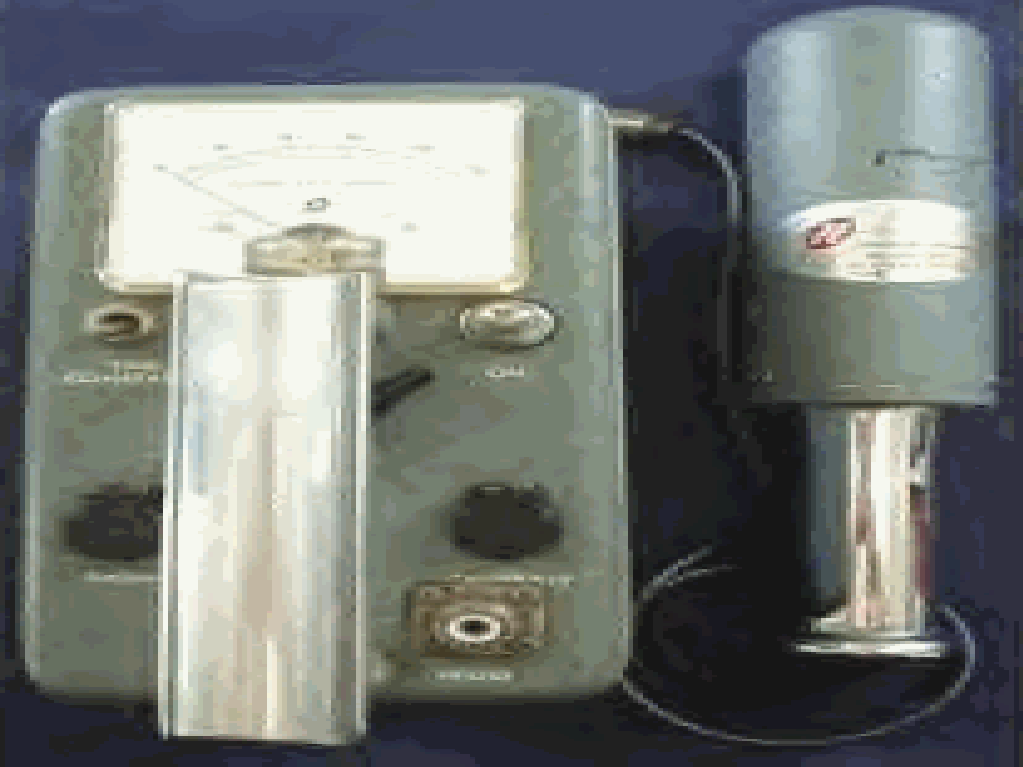
Nuclear Chicago Model 2112
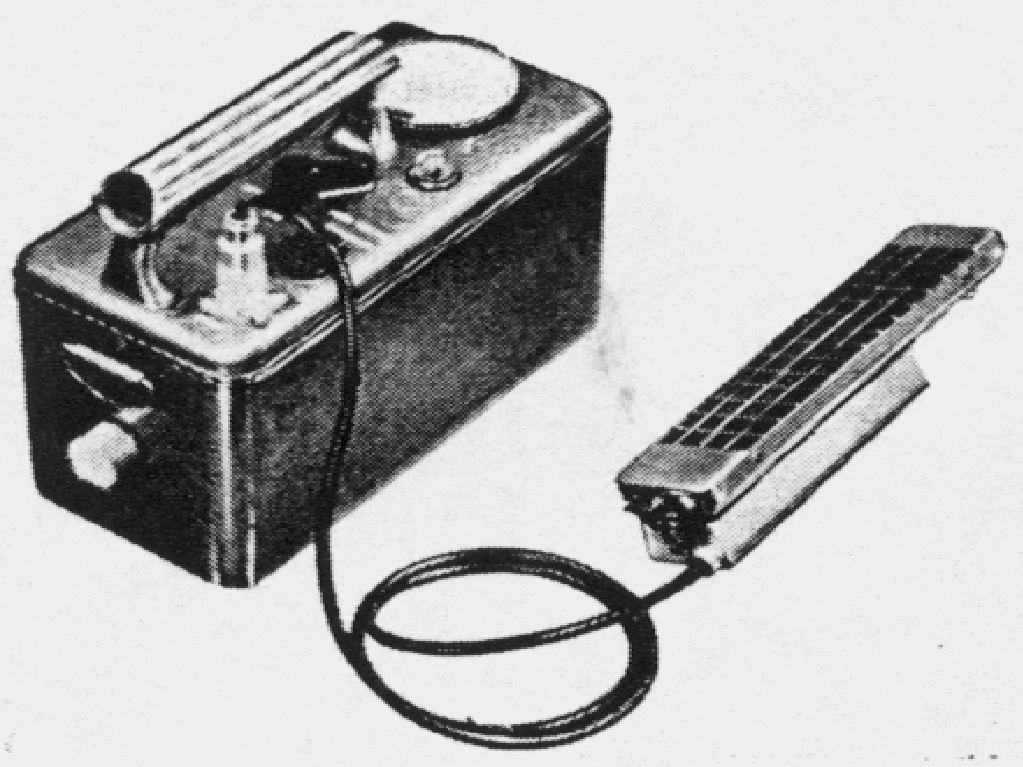
Nuclear Chicago Model 2112-P 1957
The Model 2612 is a battery operated GM counter sold in 1954. It had a choice of thin window or glass wall GM detector for alpha, beta and gammas. The probe is mounted in the handle and easily removed for surveying. Three ranges of 0.2, 2 and 20 mR/h, and 600, 6000 and 60,000 cpm. It uses two 67.5 and two 1.5 volt batteries. The unit is 10” x 4.75” x 5.75” and weighs 10 lbs. The M and P models had different probe sets and were offered in 1957. The Model 2612M sold for $255 and was designed for general beta-gamma survey work and prospecting. The Model 2612P sold for $295 and was designed for monitoring alpha and soft betas as well as harder radiation.
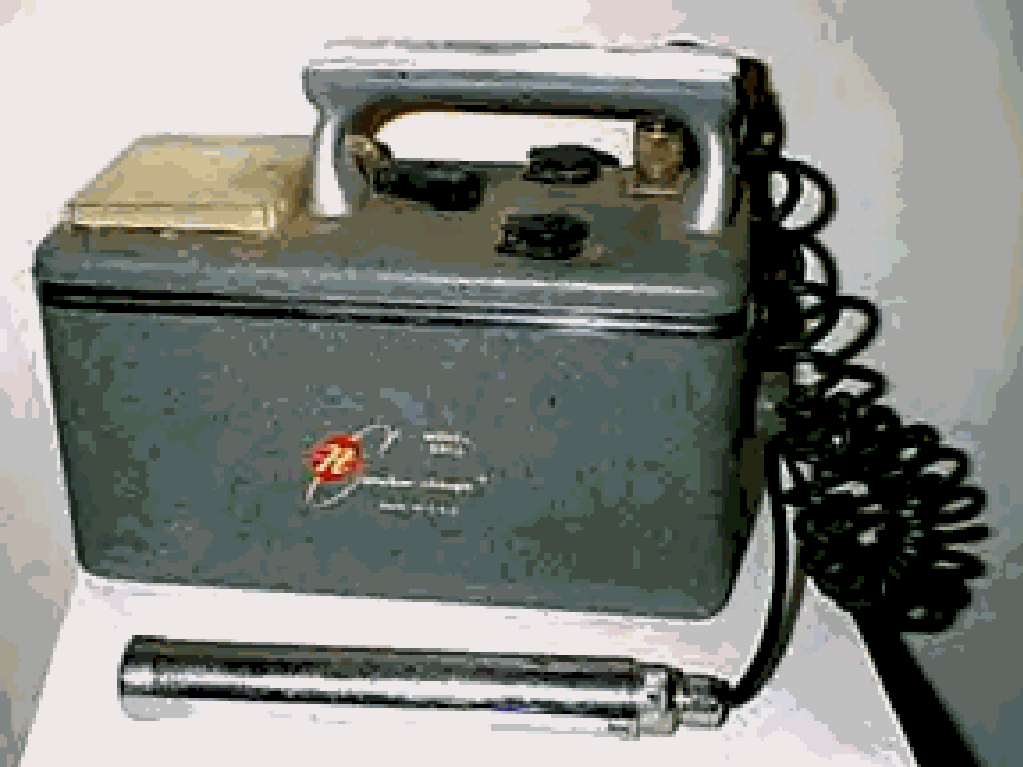
Nuclear Chicago Model 2612
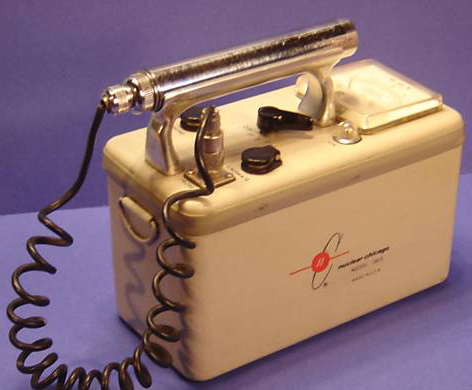
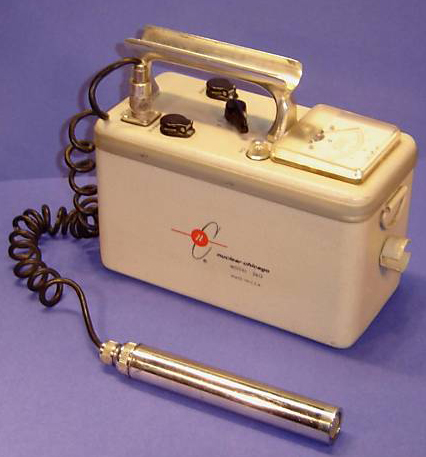
Nuclear Chicago Model 2612 1950's
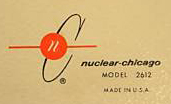
Nuclear Chicago Logo 1950's
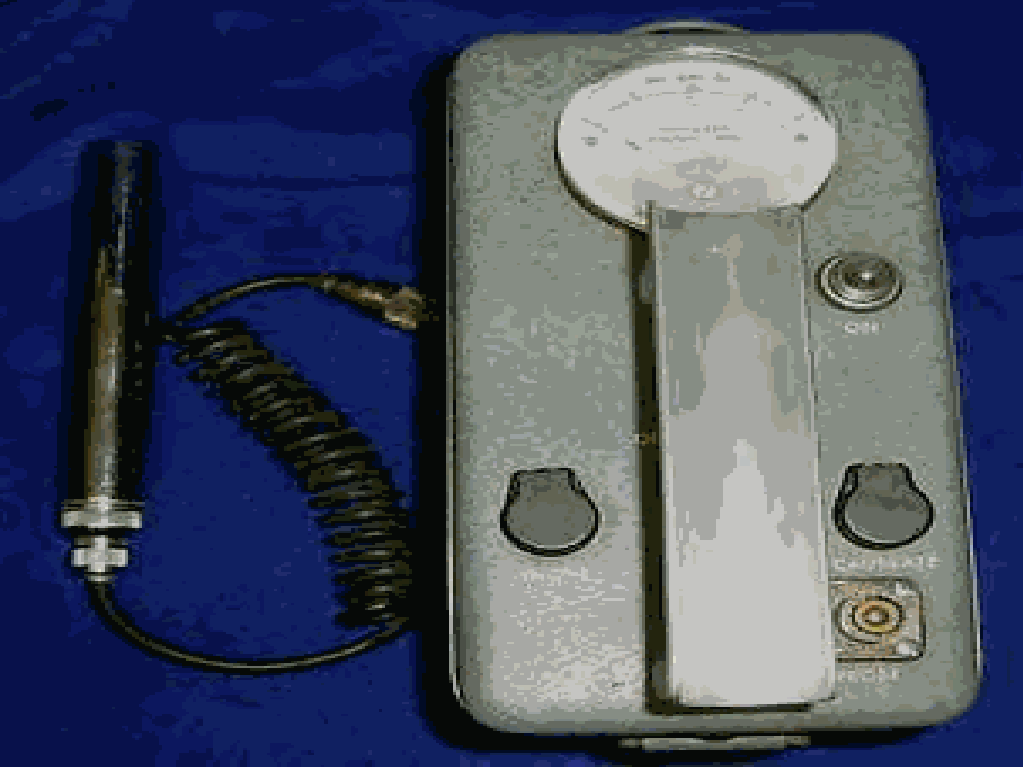
Nuclear Chicago Model 2612
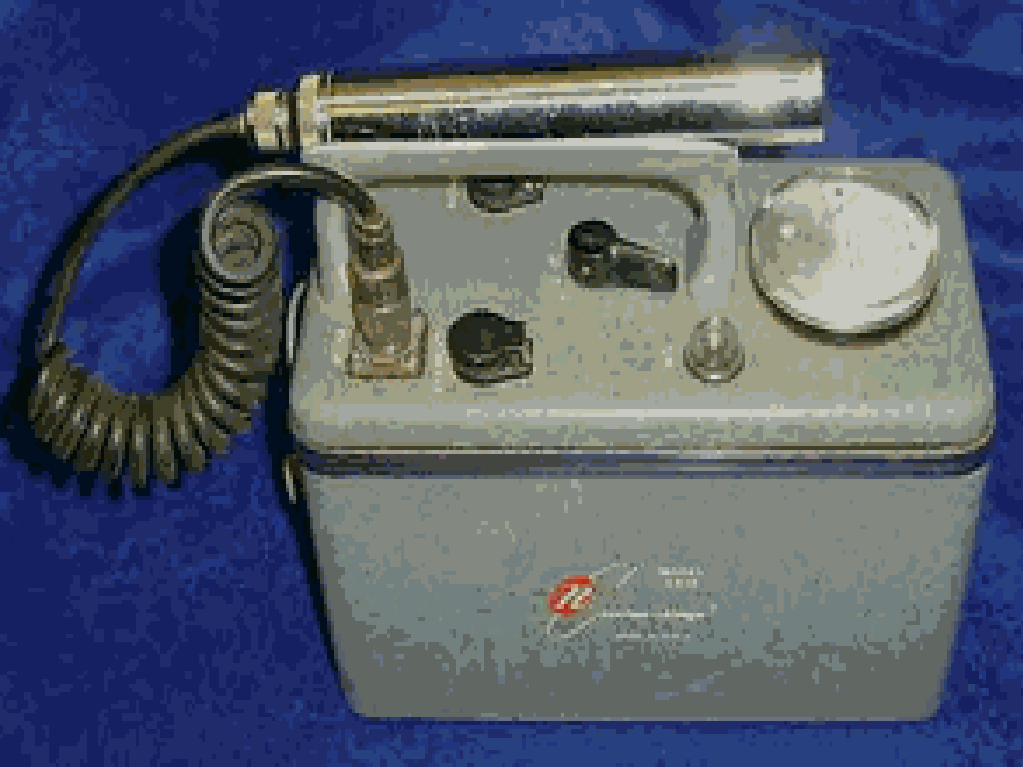
Nuclear Chicago Model 2612
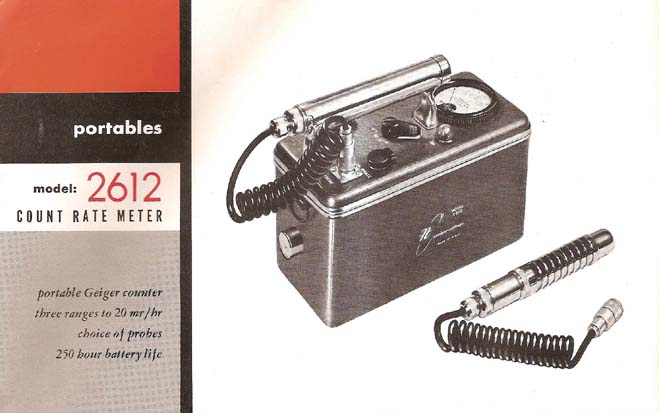
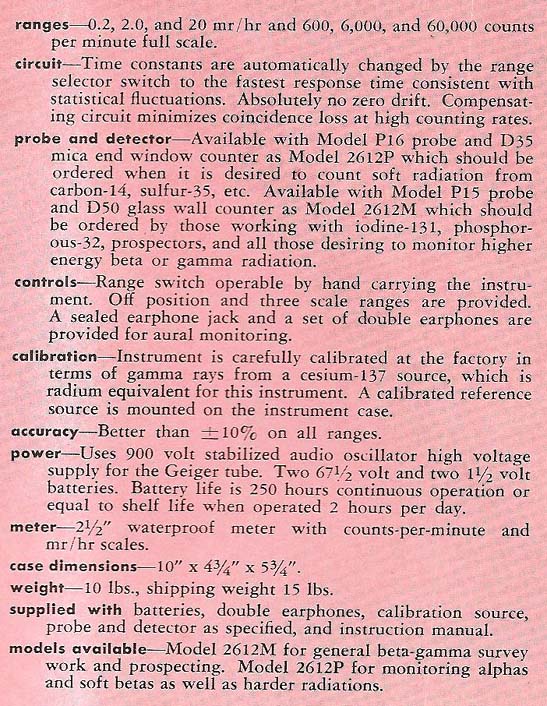
Nuclear Chicago Model 2612 and Specifications 1955
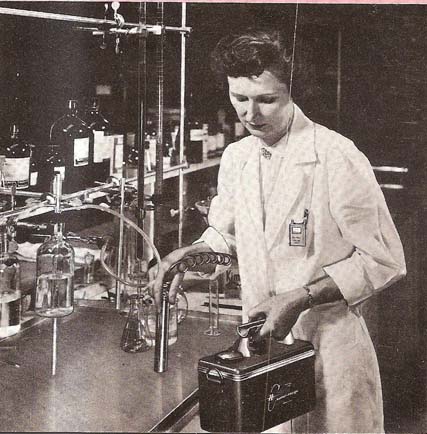
Nuclear Chicago Model 2612 1955
The Model 2613 “Oracle” was offered in 1955 for uranium exploration. The circuitry is the same as the Model 2612 but it has a ten specially matched GM tube detector pack arranged in two rows behind the bulls-eye on the front of the unit. Each tube is 1.5 to 5 times as sensitive as ordinary Geiger tubes. All together it is 15-50 times more sensitive than most Geiger counters. It has three ranges from 0.02, 0.2 and 2 mR/h. It is ultra-sensitive down to 0.001 mR/h. It came with a 0.1% uranium ore sample in a sealed container. Ore discovered could be crushed and placed in the identical container as the included sample. The case has a bulls-eye on the front for reliable assaying and instructions for determining percent uranium. The center of the bulls-eye has written “Ore Test Area”. The unit used two 67.5 and two 1.5 volt batteries. The unit is 10” x 4.75” x 5.75” and weighs 8 lbs. The unit sold for $395.
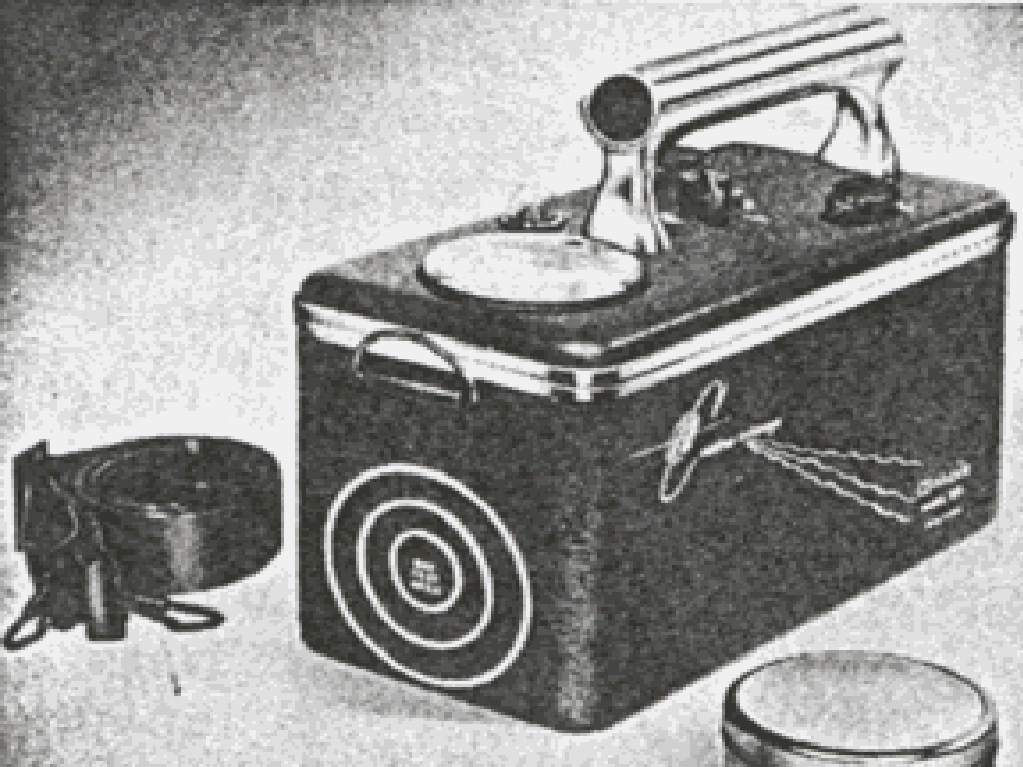
Nuclear Chicago Oracle Model 2613 1955
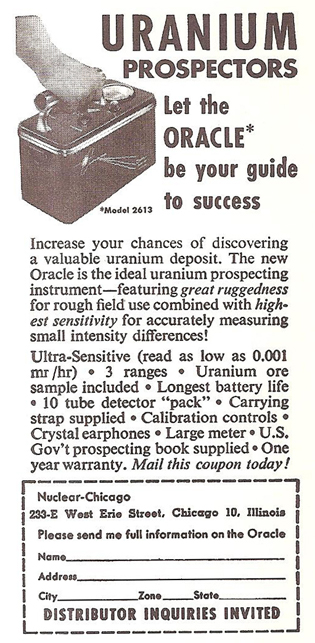
Nuclear Chicago Oracle Ad 1955
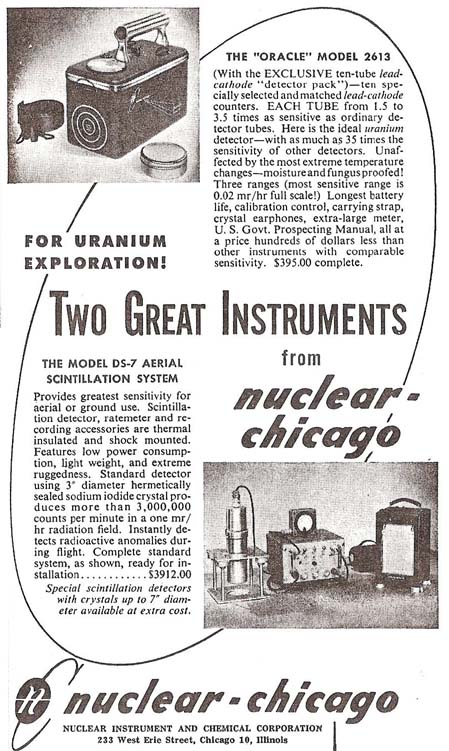
Nuclear Chicago Model 2613 Oracle Ad 1955
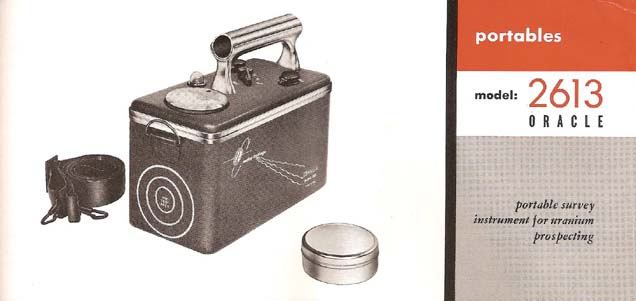
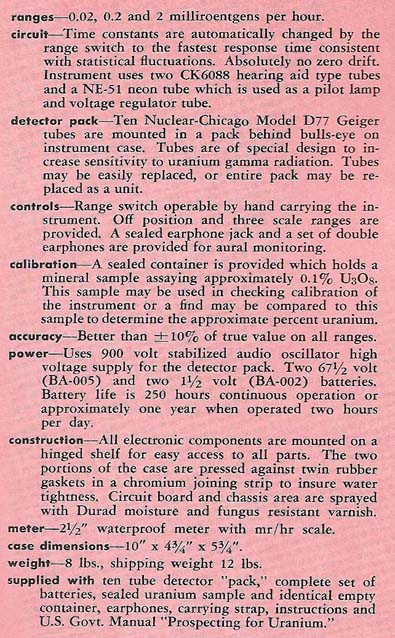
Nuclear Chicago Oracle Model 2613 and Specifications 1955
The Model 2585 Cutie Pie was introduced in 1954. It was a beta-gamma ion chamber survey meter. It has a single position switch on the handle allow single hand operation. It had ranges from 50, 500 and 5000 mR/h. It used four 22.5 and one 1.5 volt batteries. It was housed in a lightweight cast aluminum case and designed for good balance. The unit was 6” x 4” x 12.5” and weighed 6 lbs. The unit sold for $245.
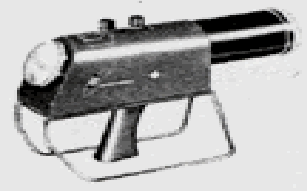
Nuclear Chicago Model 2585 Cutie Pie 1954
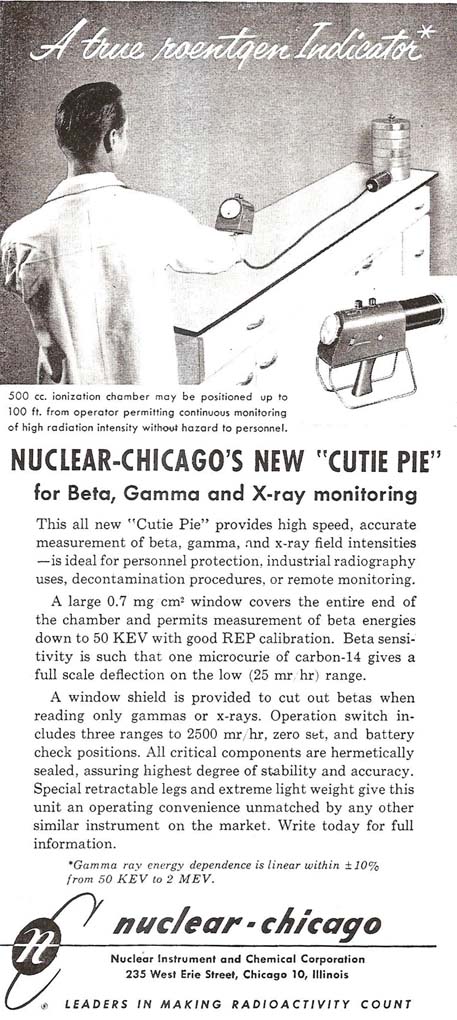
Nuclear Chicago Ad showing detachable probe 1954
The Cutie Pie Model 2586 was introduced in 1954. It had a 500 cc ionization chamber which could be removed and positioned up to 100 feet away via a cable. This allowed the operated to monitor high radiation intensity. It was useful for beta, gamma and x-ray monitoring. It has a large window covering the entire end of the chamber allowing measurement of betas down to 50 keV. A window shield is provided for allowing x-ray and gamma only monitoring. It has three ranges of 25, 250 and 2500 mR/h. It also has a battery check position on the switch. It has retractable legs for self-standing applications. It came in a medium range, 2.5 R/h, and the high range, 250 R/h, ion chambers. It uses four 30, two 15, and four 1.3 volt batteries. The unit was 3.5” x 8” x 12.5” and weighed 4 lbs. It sold for $345 in 1955. The Model 2586-P was offered in 1957 and sold for $445.
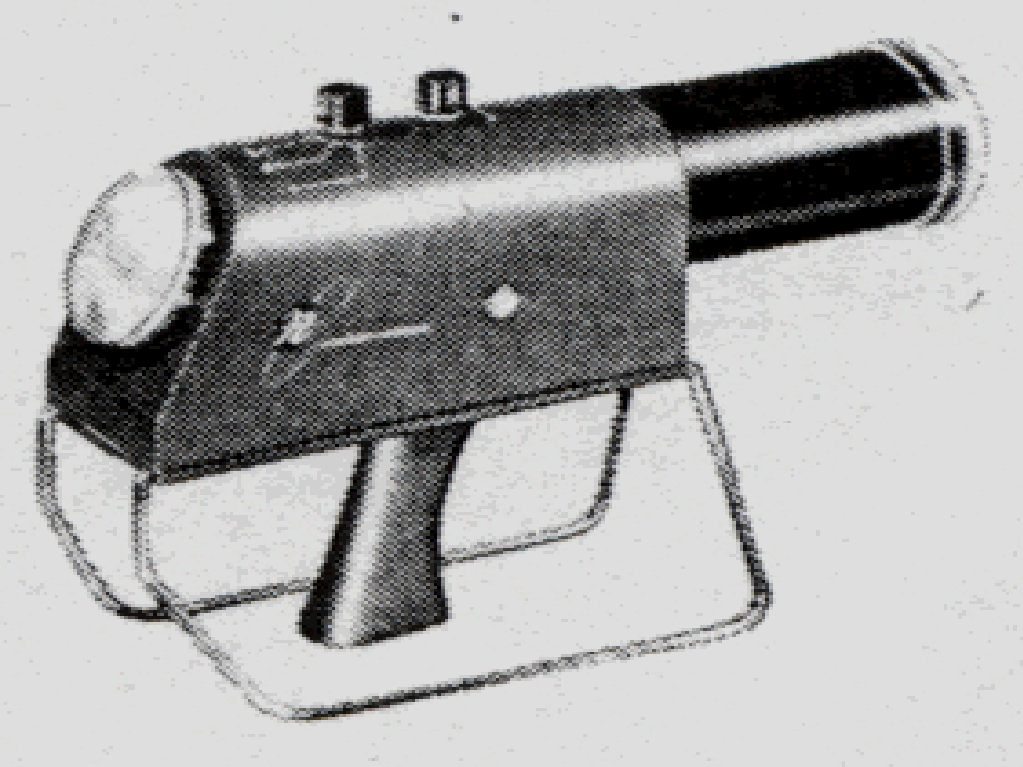
Nuclear Chicago Model 2586 Cutie Pie 1955
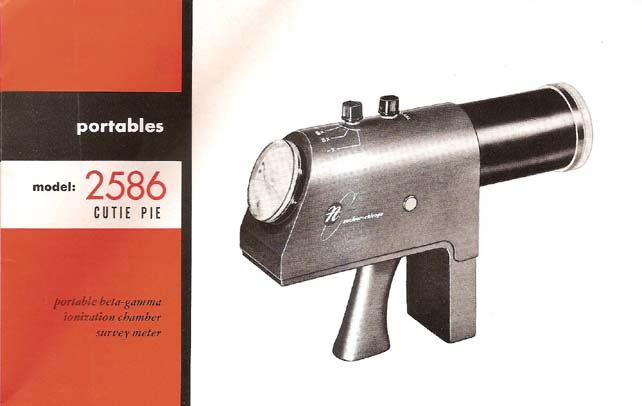
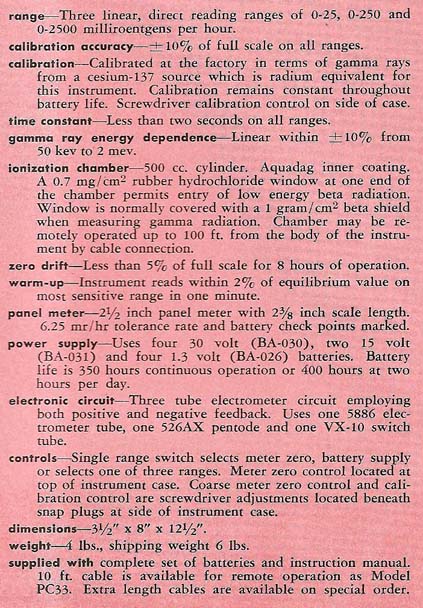
Nuclear Chicago Model 2586 Cutie Pie and Specifications 1955
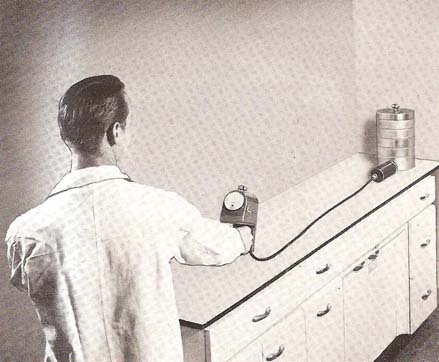
Nuclear Chicago Model 2586 Cutie Pie with Detachable Probe 1955
The Model 1613A Classmaster was a radioactivity demonstrator. It came as a complete kit with two sources, 20 cardboard sheets, 10 lead sheets, 15 aluminum sheets, 1 cardboard tube, 1 lead tube and 1 aluminum tube. The unit could count to 15,000 cpm. It could power counters from 500-1200 volts. It was 10” x 13.75” x 9.5” and weighed 24.5 lbs. An optional demonstration meter was available which was 7.25” x 7.25” x 4-3/8”. The kit sold for $169.50.
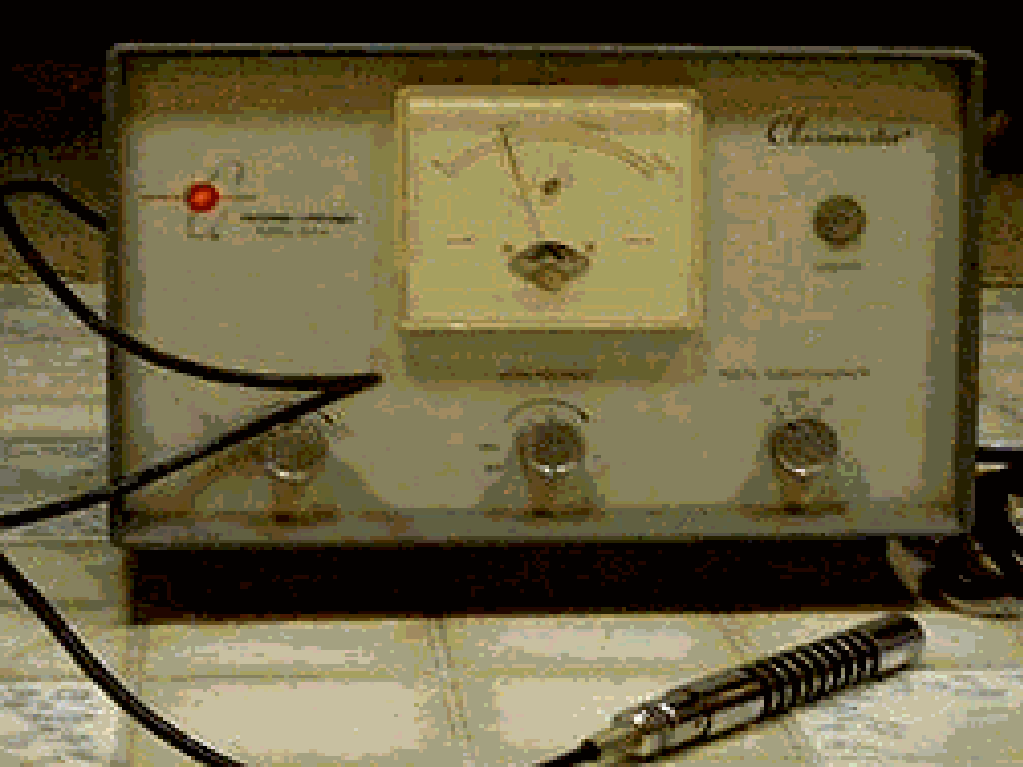
Nuclear Chicago Model 1613A 1954
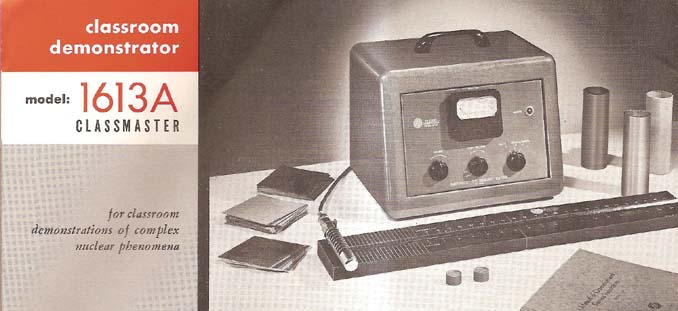
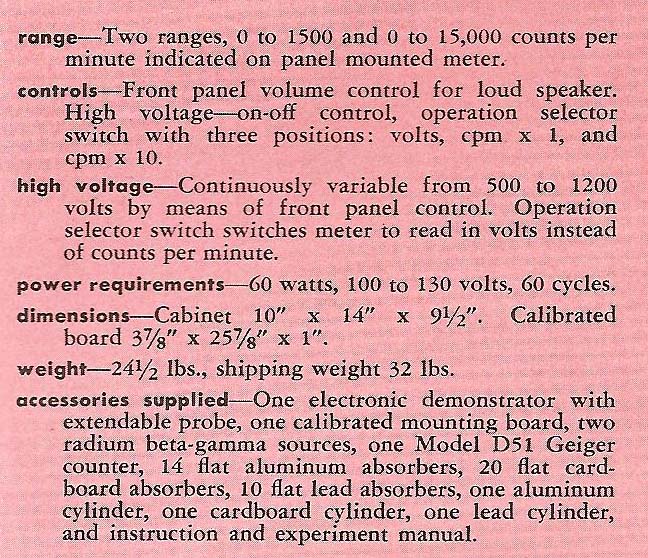
Nuclear Chicago Model 1613A Classmaster and Specifications 1955
The Model 1615-B was a rate meter for radiation measurements. It was a bench top unit operating on AC. It had five ranges from 500 to 50,000 cpm. The standard probe has a three foot cable and a magnet to attached to the case. A 10’ probe was optional. It could accommodate detectors from 650-1500 volts. It was 13” x 11” x 9.5” and weighed 27 lbs. It is suggested as part of the “Complete All-Purpose Laboratory”.
Need photo
Nuclear Chicago Model 1615-B 1954
The Model 1619 “Labitron” was designed as an alpha, beta, and gamma meter for laboratory use. The unit had four ranges from 500-20,000 cpm. It could accommodate up to 900 volts for the detector probe. The unit was 13.5” x 11” x 9.5” and weighed 23 lbs. The unit sold for $265 in 1957.
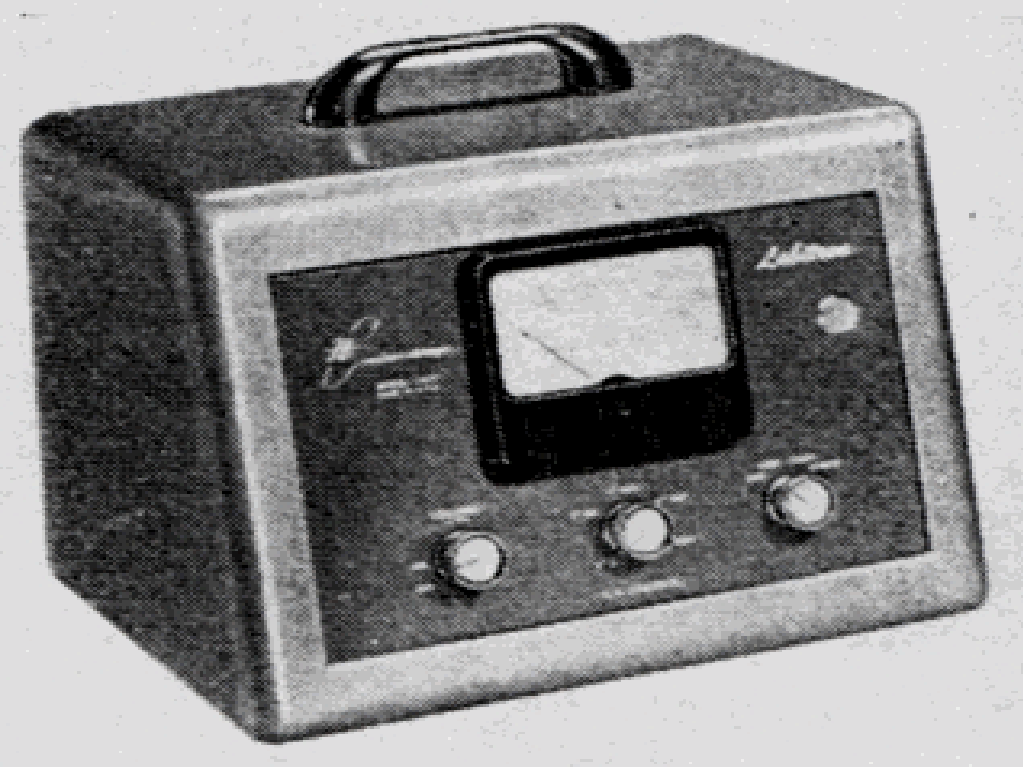
Nuclear Chicago Labitron Model 1619 1954
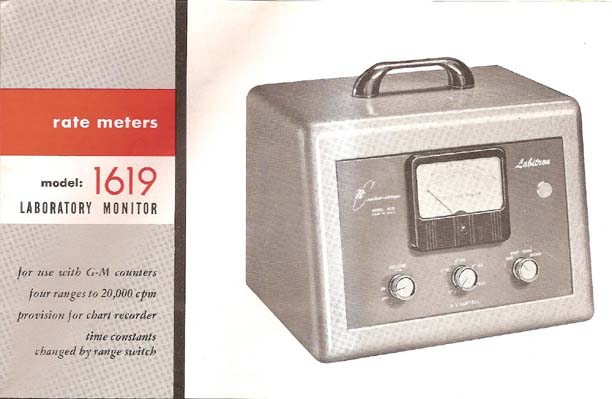
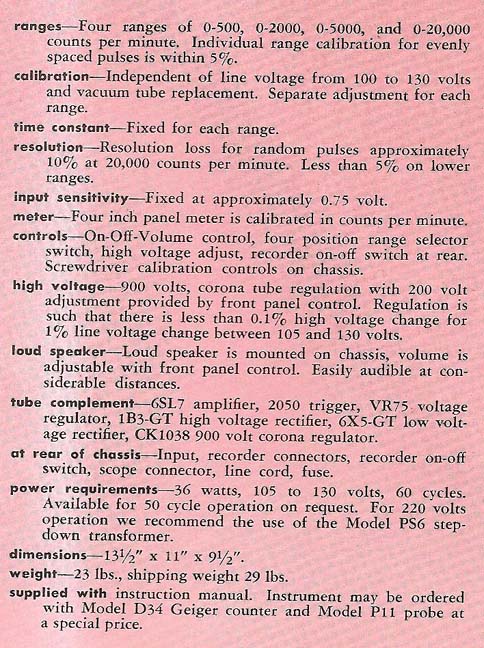
Nuclear Chicago Model 1619 and Specifications 1955
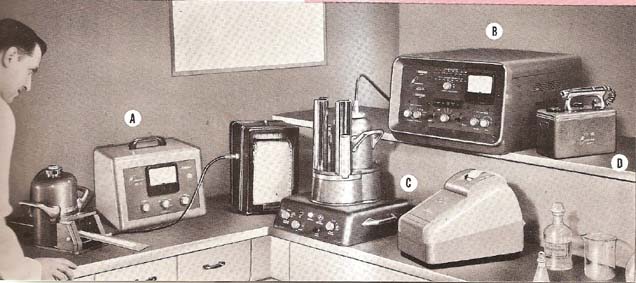
Nuclear Chicago Model 1619 1955
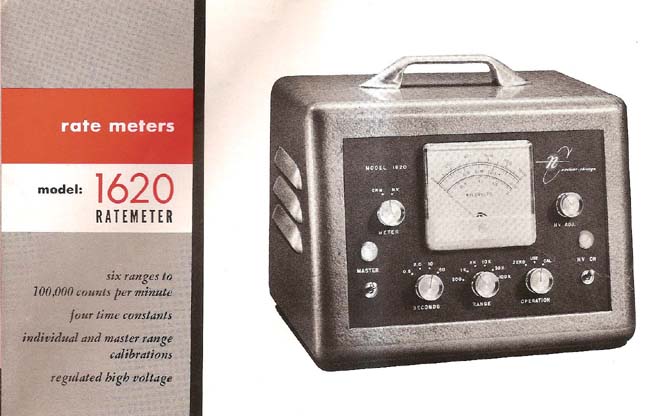
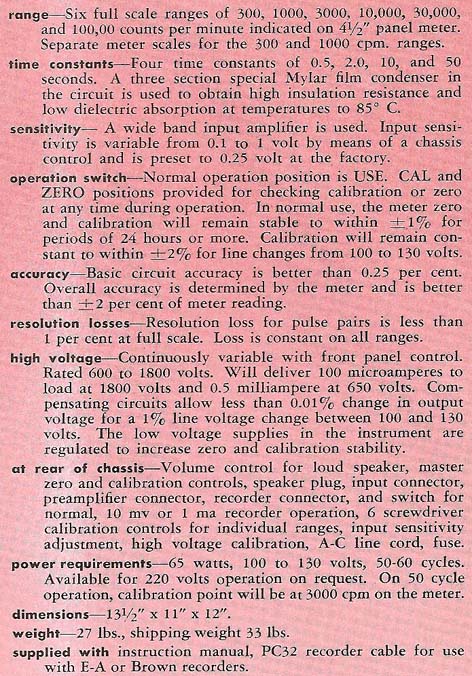
Nuclear Chicago Ratemeter Model 1620 and Specifications 1955
The Model MR-10 was an alarming circuit that operated on AC. The unit is essentially a sensitive unit that operates with the Model 1615-B or Model 1619. It can be used with a bell, buzzer, howler or light alarm and remains on until manually reset. It can be used to monitor low level gamma and will indicated an increase of 10% over background using a 2” x 24” Geiger counter. The unit is 8” x 8” x 8” and weighs 5 lbs.
Need photo
Nuclear Chicago Model MR-10 1954
The Nuclear Chicago “Samson” Model 2582 was offered in 1954. It was designed to measure low level alpha, beta and gamma radiation. It was especially useful for low level alpha, beta and gamma contamination. It has a 40 cubic inch ion chamber at the bottom of the case. The ion chamber is 5-1/8” x 4-3/4” x 1-5/8” deep. A thin 4” x 4-3/8” rubber hydrochloride window is protected by a stainless steel grill. It has three ranges of 500, 5000 and 50,000 cpm and 0.7, 3.5 and 17.5 mR/h. It has a neon flasher as well as a large meter. It uses seven 22.5, four 1.3, one 6.5, and one 9.1 volt batteries. The unit was 6-1/8” x 8-5/8” x 7-7/8” and weighed 8 lbs. The unit sold for $350.
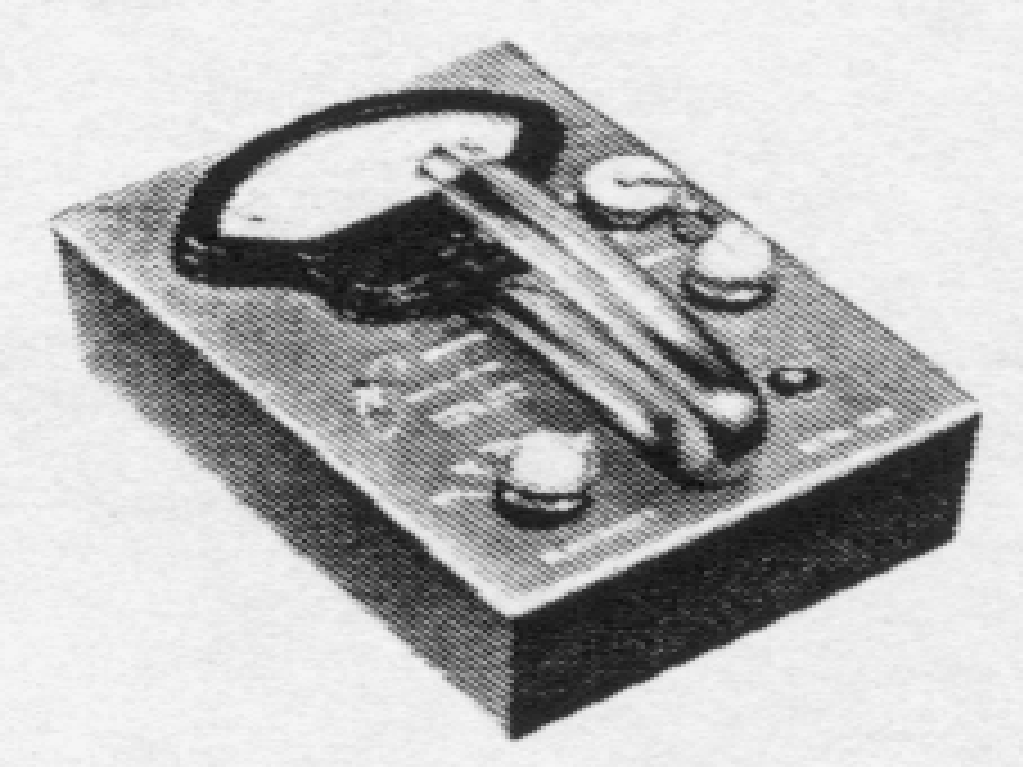
Nuclear Chicago Samson Model 2582 1954
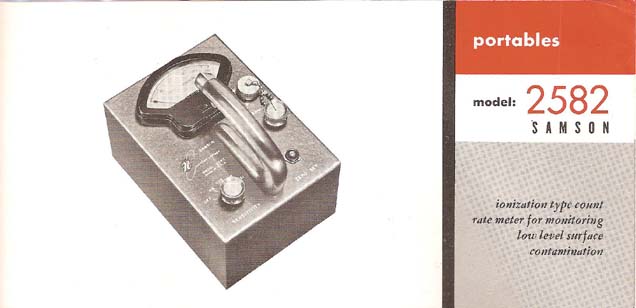
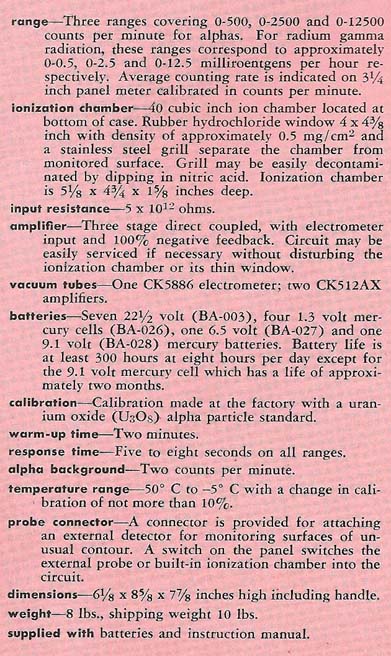
Nuclear Chicago Samson Model 2582 and Specifications 1955
The Model 2715 “Nemo” was offered in 1951 as a neutron detector. It was designed to measure fast and thermal neutrons separately on a special logarithmic scale. It was sold by Nuclear Chicago in 1954. It contains two enriched boron-trifluoride (BF3) neutron detectors, one for thermal neutrons and a one surrounded by a block of paraffin and cadmium shield to detect fast neutrons. The proportional counters are 5/8” diameter x 4” long. The BF3 is at a pressure of 20 mm of mercury. It has a pair of neon lights, which are alternately lit with each neutron detected. It has a three-position switch marked Off, Thermal and Fast. It uses four 45 and seven 1.35 volt batteries. The unit calibrated with a radium-beryllium neutron source. The unit was 6” x 6” x 12-3/4”. The paraffin block was 4.5” x 4.5” x 2.5”. The unit weighed 16.5 lbs. The unit sold for $1350 in 1957. The Nemo was designed to be used on the USS Nautilus (SSN-571), the world's first operational nuclear reactor powered submarine. The Nautilus was launched in 1954.
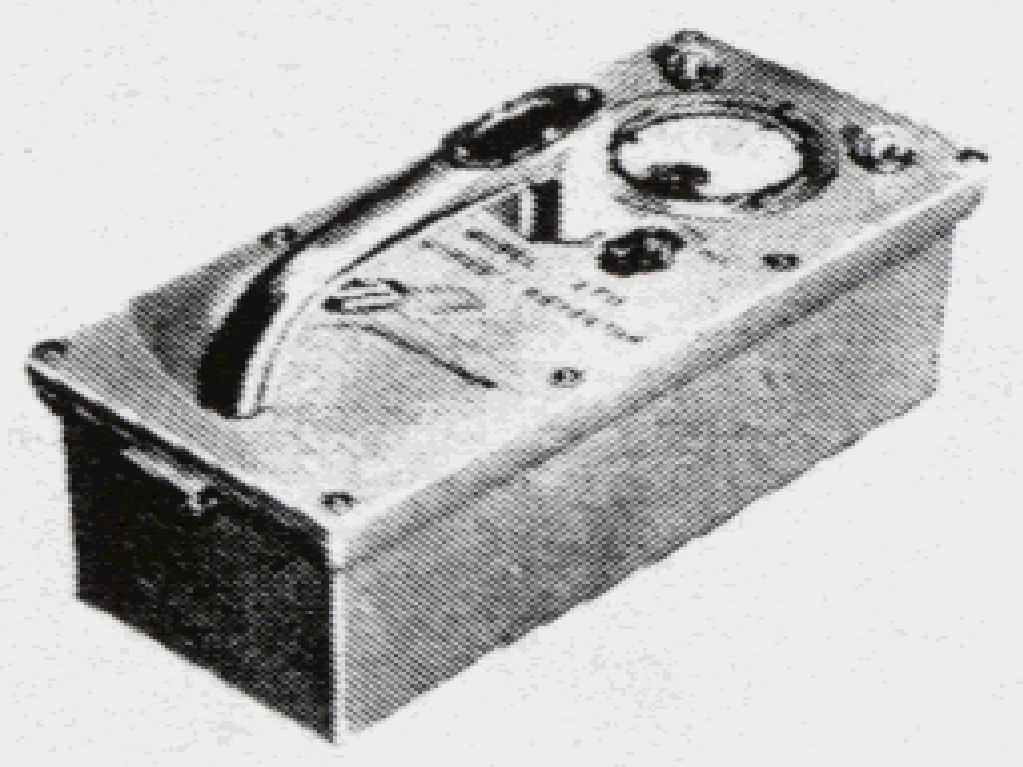
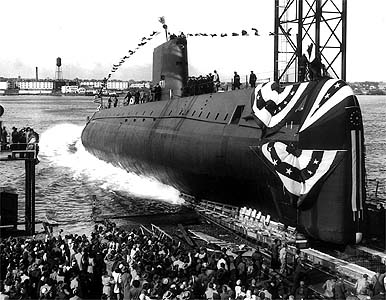
Nuclear Chicago Nemo Model 2715 1951 (left) and the USS Nautilus 1954 (right)
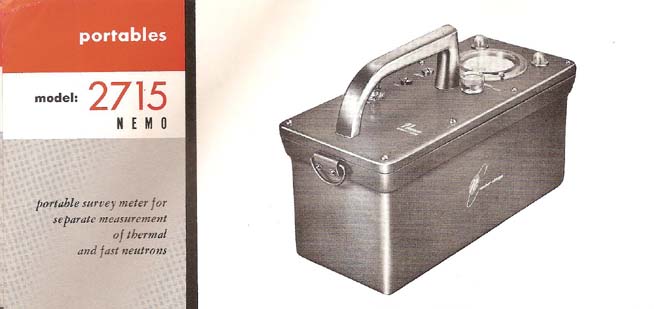
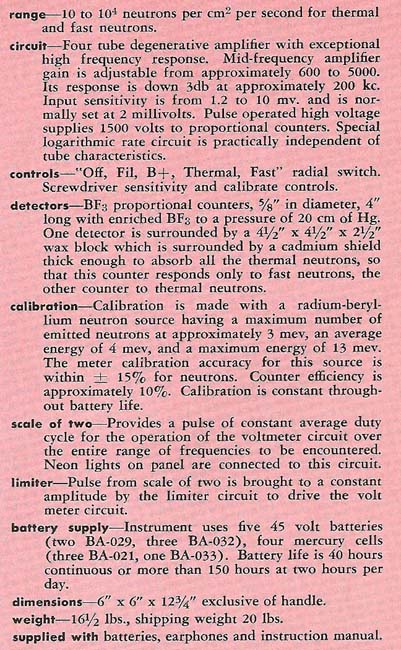
Nuclear Chicago Nemo Model 2715 and Specifications 1955
The Model 2586 was introduced in 1957 in the Cutie Pie style. It had a cylindrical 500 cc ion chamber which was open to the atmosphere. The chamber could be removed and extended up to 100’. It had two legs to support the unit. The range was 25, 250 and 2500 mR/h. It weighed 4 lbs. It used four 1.34V, two 15V and four 30V batteries. It came with a C-14 check source which was mounted on the cover of the low range chamber.
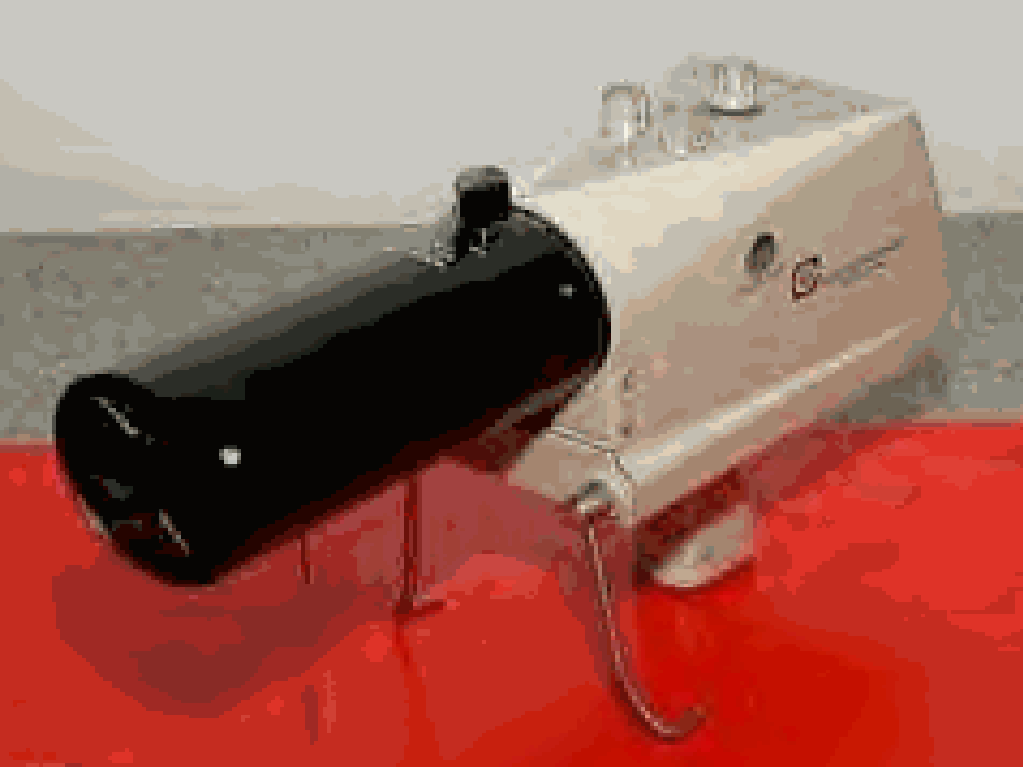
Nuclear Chicago Model 2588
The Model DS-7 was a carborne or airborne detection system for uranium and oil exploration in 1954. It used a large (1.5" x 3" diameter) sodium iodide crystal. It has power supply unit, display meter on a 10' cable, an alarm buzzer and a paper recording unit. It could be operated on AC or DC. Crystals up to 7" diameter were available. It sold for $3912 in 1954.

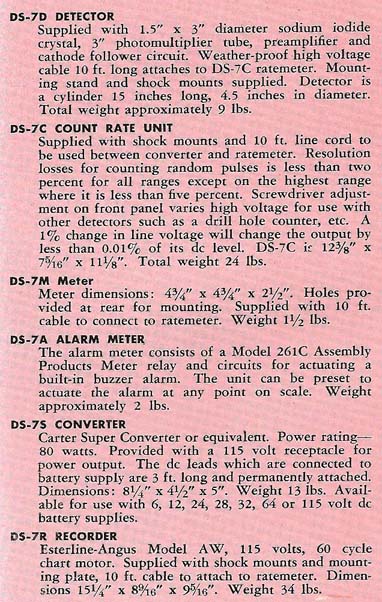
Nuclear Chicago Model DS-7 Airborne or Carborne System and Specifications 1955

Nuclear Chicago Model DS-7 Airborne System Ad 1955
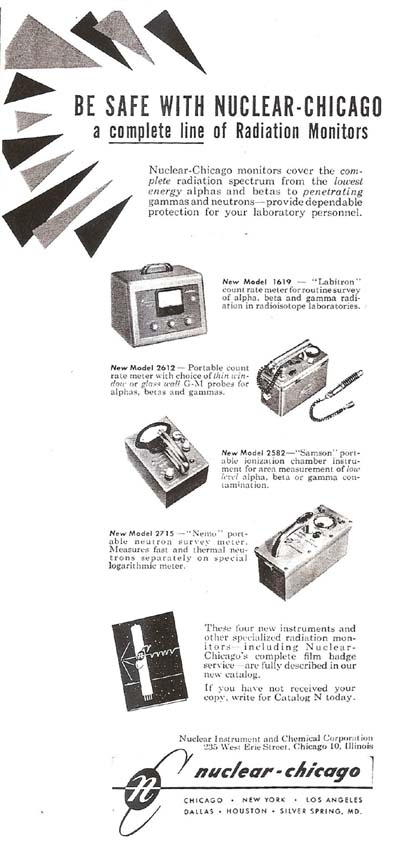
Nuclear Chicago Ad with several instruments 1954
Nuclear Chicago Catalog P
Nuclear Instruments and Chemical Corporation 1955
